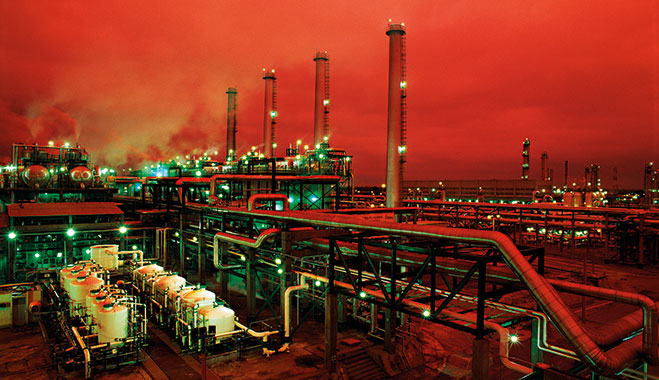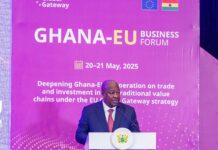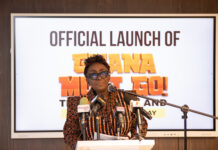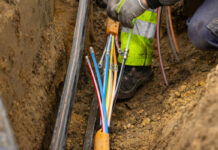
On November 16, 2016 at the Summit of African Heads of State and Government in Marrakech, Secretary-General Ban Ki-moon said that, “Compared to the global average, temperatures are rising higher in this continent. Of the 50 countries hit hardest by climate change, 36 are in Africa including Ghana.”
It has long been expected that countries with tropical climates will be impacted more with the adverse effects of climate change. Combined with extremely low levels of access to electricity in the continent, African countries and their citizens are facing a major energy security crisis.
Much of Africa does not have the luxury previously afforded to the developed world – decades of fossil fuel industrialisation and electrification. This vast continent must leapfrog dirty energy and achieve industrialisation and energy security using clean, affordable energy. This is the hard reality that the world’s youngest and fastest-growing population has to deal with, yet they are willing to do so if the price differential is met by those who created the climate crisis in the first place: rich Western nations. The West must lend financial support to the region if there is any realistic prospect that Africa can achieve economic growth without relying on fossil fuels.
The good news is that there is widespread support and the topic of energy security in Africa is a recurring theme on global policy agendas. After COP21 in Paris in 2015, the African Union led the establishment of the Africa Renewable Energy Initiative. Ban Ki-moon’s Climate Resilience Initiative, A2R brings together the United Nations, public and private partners to help the most vulnerable: A2R stands for ‘Anticipate, Absorb and Reshape’. And it is in reshaping Africa’s approach to energy security where the key to sustainable energy security lies.
The cost of renewables – particularly solar panels – has fallen significantly over recent years, bringing mass produced clean energy into the realms of reality. Morocco’s Saharan city of Ouarzazate is now home to a solar panel complex of 500,000 rotating 12-metre-high mirror panels, which follow the trajectory of the sun and continue to produce power after sunset. The complex, which cost US$9bn, will significantly help Morocco to reduce its dependence on energy imports (currently 94%) and help to negate the effects of climate change in one of the continent’s driest regions. Technical innovations at source (panels) are now also supported by affordable and highly efficient downstream infrastructure, which in Morocco’s case will enable it to bring down electricity costs and over time become an energy exporter.
Whilst renewables can now reliably contribute to a country’s national grid, off-grid rural access is one of the biggest challenges. Currently two out of every three people in Africa live without electricity – 600 million people. To address this, governments need to collaborate with investors and private companies to find solutions to the issue of inadequate infrastructure and identify new funding models. In Tanzania, a private company called Off-Grid Electric has created affordable, clean off-grid solutions with a rural distribution model for its own modular solar panel systems.
Off-grid solar lighting (also known as ‘pico-solar’) products have become increasingly commonplace – these are typically standalone products that are rechargeable and can be installed, assembled and maintained easily. Entry-level systems can cost less than $100, which can provide clean, affordable, renewable energy for LED lighting around the clock.
As far back as 2007, The World Bank and International Finance Corporation (IFC) joined forces to create a joint initiative called Lighting Africa, which incentivises the private sector to develop clean and affordable standalone products. Lighting Africa has helped governments to identify suppliers and create competitive markets, often supporting companies with funding for targeted distribution campaigns. As of December 2015, the initiative had directly contributed to the installation of ‘quality-verified’ off-grid solar lighting products in the homes of 35,000,000 people. And since 2009, almost 10.5 million off-grid solar lighting products have been sold through local distributorships in Africa.
Collaboration between the private sector and government has enormous potential to improve national and regional grids. The continent continues to flare excess gas – a wasteful and environmentally damaging activity that the Global Gas Flaring Reduction Partnership is trying to end. Nigeria is the world’s second-largest flarer (Russia is the largest) – but this excess gas can be put to good use. Natural gas power stations can be up and running within two years if global mining companies and governments work together to utilise this valuable resource. Mining companies themselves have an opportunity to become ‘anchor’ customers to newly constructed gas-fueled power stations, which could contribute to national grid expansion.
There is no silver bullet and so energy security in Africa has to be approached from many angles: at both the rural and national level. The private sector has, arguably, the greatest role to play but that cannot happen without government will and support (financial and otherwise) from local, regional and international bodies. Energy security is critical for economic growth and social mobility – but also in the pursuit of climate change justice which African citizens deserve having so far benefited the least in comparison to other more developed nations who have profited far more from fossil fuel industrialisation.
























